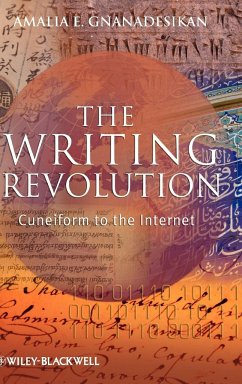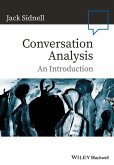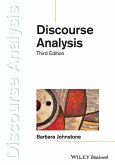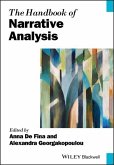In a world of rapid technological advancements, it can be easy to forget that writing is the original Information Technology, created to transcend the limitations of human memory and to defy time and space. The Writing Revolution picks apart the development of this communication tool to show how it has conquered the world.
Explores how writing has liberated the world, making possible everything from complex bureaucracy, literature, and science, to instruction manuals and love letters
Draws on an engaging range of examples, from the first cuneiform clay tablet, Egyptian hieroglyphs, and Japanese syllabaries, to the printing press and the text messaging
Weaves together ideas from a number of fields, including history, cultural studies and archaeology, as well as linguistics and literature, to create an interdisciplinary volume
Traces the origins of each of the world's major written traditions, along with their applications, adaptations, and cultural influences
Explores how writing has liberated the world, making possible everything from complex bureaucracy, literature, and science, to instruction manuals and love letters
Draws on an engaging range of examples, from the first cuneiform clay tablet, Egyptian hieroglyphs, and Japanese syllabaries, to the printing press and the text messaging
Weaves together ideas from a number of fields, including history, cultural studies and archaeology, as well as linguistics and literature, to create an interdisciplinary volume
Traces the origins of each of the world's major written traditions, along with their applications, adaptations, and cultural influences
"Anyone interested in the development of writing, even without a background in linguistics, will find the book accessible, while linguists will appreciate the well chosen technical information that is included in the description of each individual system." (Language Documentation & Conservation, 2 December 2009)
"In The writing revolution: Cuneiform to the internet, an engaging book that combines accuracy and readability better than any other work on orthographic practices across time and space, Amalia E. Gnanadesikan concurs with the usual view that the complex calendrical system of the Maya s predecessors, the Olmec, was 'the intellectual stimulus (80) for the development of writing in Mesoamerica, which she discusses in Ch. 5, 'Maya glyphs: Calendars of kings ." (Language, 2011)
"This informative, yet accessible and entertaining, book will be of interest to readers with an interest in the history and evolution of world languages, as well as to students and instructors looking for a comprehensive and enjoyable overview of the subject.." ( Language in Society , 14 December 2009)
"In The writing revolution: Cuneiform to the internet, an engaging book that combines accuracy and readability better than any other work on orthographic practices across time and space, Amalia E. Gnanadesikan concurs with the usual view that the complex calendrical system of the Maya s predecessors, the Olmec, was 'the intellectual stimulus (80) for the development of writing in Mesoamerica, which she discusses in Ch. 5, 'Maya glyphs: Calendars of kings ." (Language, 2011)
"This informative, yet accessible and entertaining, book will be of interest to readers with an interest in the history and evolution of world languages, as well as to students and instructors looking for a comprehensive and enjoyable overview of the subject.." ( Language in Society , 14 December 2009)








